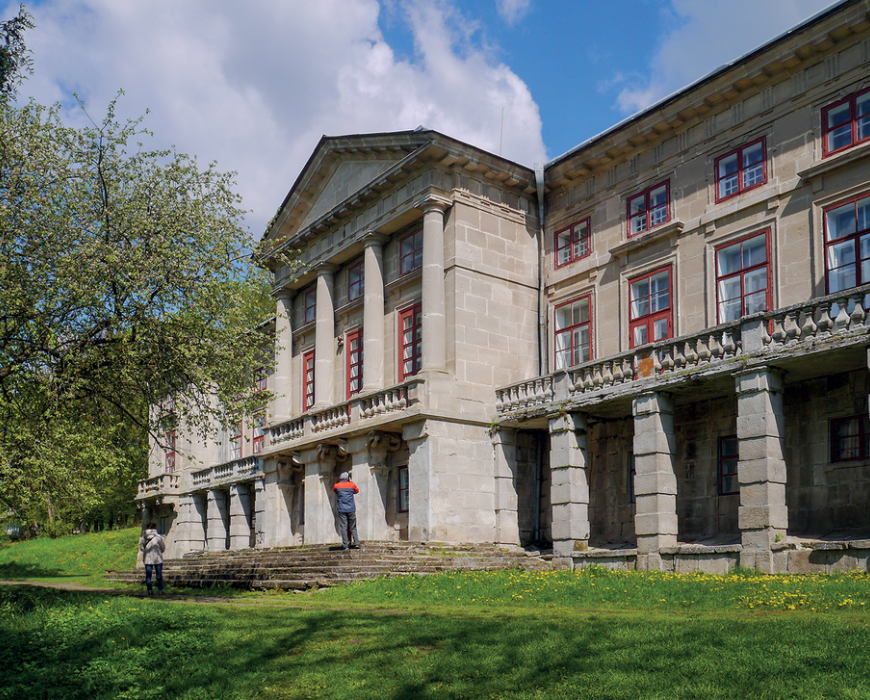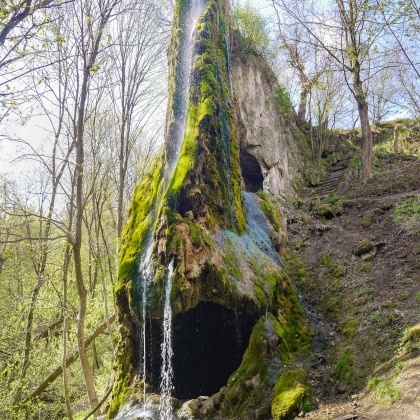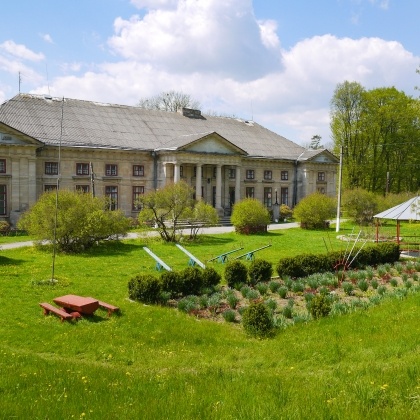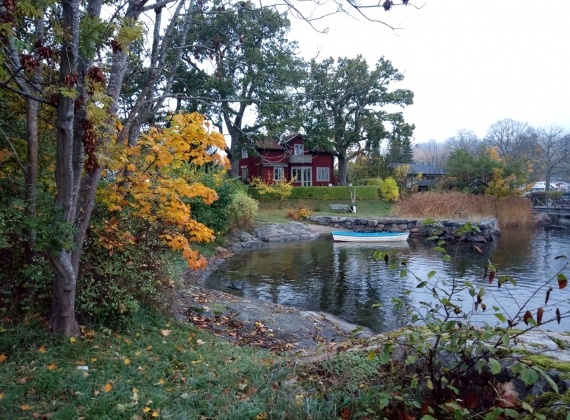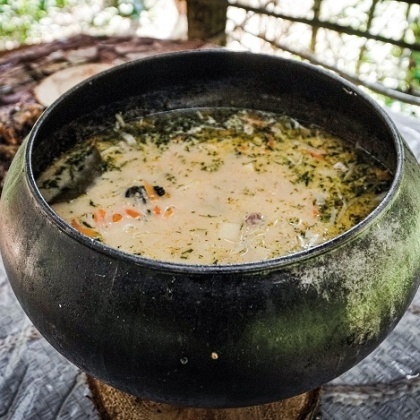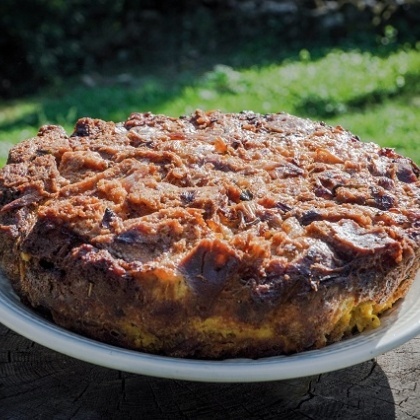To begin with, the most interesting thing in Maliivtsi is the Orłovsky residence and the waterfall. The founder of the residence, which is one of the most romantic in Podillya, was an outstanding crown hunter, a favorite of Stanislav August, Jan Onufriy Orłovsky. The residence already at the beginning of the 19th century caused surprise and enthusiastic poetic dedications. According to family legend, the famous architect Domenico Merlini built for him a magnificent residence in the classical style of 1788. This date is still in one of the side gables. Almost all of the 19th century. Maliivtsi legally belonged to Ignatius Orłovsky who is the grandson of the hunter, but since he had health problems, his guardian, and in fact the owner of the manor was his younger brother Oleksandr, married to the granddaughter of the odious Napoleonic Minister Talleyrand. Starting with Jan Onufriy, the Orłovski collected numerous valuables in Maliivtsi until 1917. The family had a large collection of paintings by Polish artists, transported here from the Yarmolyntsi Palace, which was burned down in 1905. During denikints's short stay in Maliivtsi, the last owner of the manor, Franciszek Ksawery Orłovsky, transported most of the paintings, coins and other movable property to Odessa, from where he sent them by ship to Marseille. Now these treasures are partly found in France and Argentina with the descendants of the count.
- Mali Regional Historical and Cultural Museum, 1A Michurina Street Geolocation
A unique waterfall is falling down the rock beautifully next to one of the ponds. This is a large rock that resembles the profile of a person's face from the side. Two artificial caves are for the mouth and eyes. They are located on top of each other. At the top cave there is a small chapel, which used to be a cell of Basilian monks. Crystal clear water flows through the "nose" of the waterfall. It starts from a spring above the rock, next to which there is a small pond with turquoise and always cold water. Above the spring is a statue of St. Onuphrius. There was a monastery before the Communists. This place is extremely attractive and "competes" with the Orłovsky Palace for tourists. If you walk a little further along the hill, you can find another old statue of St. John of Nepomuk.
Some rooms have been preserved in the palace. The former ballroom with a balcony for the orchestra is the best. Its walls and ceiling are decorated with stucco with images of musical instruments and plant ornaments. The lady's next boudoir is decorated with a wall of pink marble; another small study cabinet has dark green columns. In general, the internal enfilade layout has been preserved. The Palace on the front side has two floors, and since it stands on a hill, there are three of them on the park side. A very interesting detail of the exterior is the figures of Atlas holding a ballroom balcony on their shoulders. Until recently, the palace had a children's sanatorium, but it was closed, and instead the Palace is finally about to have a museum.
Maliivtsi village, Maliivtsi regional historical and cultural museum (1A Michurina Street; tel. +380937058423) at weekends; or Larysa (tel. +380977760906) by prior order.
- 5 potatoes
- 1/4 of cabbage
- 1 glass of white beans
- 1 big carrot
- 1 big onion
- 500 g of pork ribs
- 1 beetroot, only piebald (white-pink)
- 0,5 l of sour cream
- prunes
- dried apples and pears
- salt
- ground black pepper
Boil water in a cauldron or pan. Put the beans, cut potatoes and cabbage, chopped beetroot, ribs and dried apples, prunes and pears into the boiling water. Leave it to boil on a slow fire for 40 minutes. After about half an hour, add half the amount of sour cream. Leave for another 10 minutes.
Meanwhile, prepare the dressing. Grated carrots and finely chopped onions fry/simmer on low heat together with the rest of the sour cream. Add salt and pepper to taste. Pour into a cauldron (or pan). Cover with a lid and let the borsch rest. Serve hot.
Larysa (tel. +380977760906) by prior order.
Nachynka is not a dish for every day. It was usually served at the Easter table, along with paska, krashanka or pysanka. Its preparation requires skill, time and inspiration.
- 4 glasses of flour
- water
- soda
- oil
- chicken
- 5-6 eggs
- pepper
- salt
First, bake the plyatsok (cake) in oil in a pan. Prepare the dough the same as for varenyky, but add a pinch of soda to it. The cake should be 3-4 cm thick.
Cut the finished cake into cubes of approximately 1.5 cm. Dry the cubes on breadcrumbs.
Boil chicken, add some soft pork, and prepare a strong broth. Remove the meat from the bones, cut into 3-4 cm cubes, mix thoroughly with breadcrumbs. Beat raw eggs into the mixture, add salt and ground black pepper. Pour the broth over everything (the mixture should completely absorb the liquid).
Mix everything thoroughly again. Put it in the oven and bake for about 40 minutes. Serve hot.

